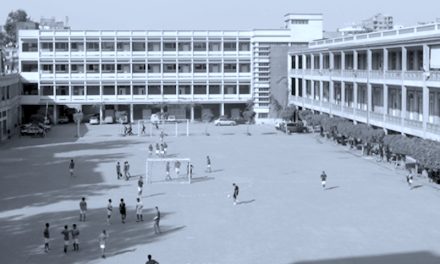| American University of Beirut | May 14, 2025 |
Climate change is having a profound impact on biodiversity—and Lebanon’s famed cedars are a prime example. “Global warming doesn’t just make it hotter; it destabilizes ecosystems,” says Salma N. Talhouk, an expert on ecosystem management and professor at the University of Beirut (AUB). “This causes some species that couldn’t survive before to thrive now, but this unfortunately happens at the expense of others.” The result, she adds, means that “some species that are outcompeted will disappear, while others will relocate or adapt.”
Cedars, a keystone species central to the survival of their entire ecosystem, may be edging toward the declining category. More than just an iconic symbol tied to Lebanon’s identity, their disappearance in some parts of the country could trigger a devastating ripple effect. “If a keystone species collapses, it can set off a chain reaction that destroys the entire surrounding habitat,” Talhouk says. She explains that to grasp just how precarious the fate of cedars—and Lebanon’s natural ecosystems—really is, we must first examine and monitor the full forest, beginning with the plants. “However,” she notes, “we don’t have enough experts in taxonomy and the necessary resources to do that.”
Lebanon is just one of the many countries facing a lack of scientists who study the grouping and classification of organisms—a global issue known as the “taxonomic impediment.” This limitation makes field monitoring of ecosystems difficult. To address this and other issues impacting biodiversity in Lebanon, Talhouk teamed up with AUB assistant professors Dany Abou Jaoude (mechanical engineering) and Ibrahim Issa (electrical and computer engineering) and founded the “Saving Lebanon’s Biodiversity” center incubator at the Maroun Semaan Faculty of Engineering and Architecture. The SLB team decided to turn a device nearly everyone carries —a smartphone—into a crowdsourcing tool for citizen science, helping to bridge the gap.
“We are using machine learning to develop a native plant species identification tool for smartphones that anyone can use,” Talhouk says of the app they are creating to tackle the issue, literally from the ground up—starting with the more than 2,600 plant types that form Lebanon’s unique ecosystems.
Talhouk notes that no existing apps offer detailed monitoring of native species that’s both country-specific and publicly available via simple, user-friendly technology. What makes the new AUB innovation unique, she says, is its universality and local accessibility: “The app is built for everyday users in Lebanon, not just scientists.”
She and her colleagues began by working with the management team at the cedar-rich Shouf Biosphere Reserve and more than 100 students from AUB’s Maroun Semaan Faculty of Engineering and Architecture, who helped populate the app’s image database with photos of Lebanon’s unique plants—data that was then used to train the AI that powers it.
Soon, a network of locals and nature enthusiasts will be able to regularly contribute data, transforming biodiversity monitoring into a community effort. “Instead of relying only on researchers, we’re empowering citizen scientists to contribute,” Talhouk explains. In return, she says, “We will make sure the app’s users stay engaged by giving them not just the scientific names of the species they document, but also other interesting details—local stories, cultural significance, and ecological facts.”
At its core, the app uses an algorithm that takes an input—in this case, various image perspectives of a plant species —and outputs a classification, identifying the species name. Collectively, these images can reveal hidden patterns from the data that would otherwise be invisible to the human eye, as each photo submitted also records the plant’s location. This enables AUB researchers to build a massive and evolving image dataset that can accurately track specific species and help foresee larger-scale threats to ecosystems like the cedar forest. “We will be using this technology and citizen science, along with artificial intelligence, to create large, continuous datasets that can tell us if species are shifting in a location or disappearing,” Talhouk says.
The resulting information helps fulfil an unmet need. “The baseline knowledge of what species are present is already available,” Talhouk says. “What’s missing, and what the app will provide, is the ability to follow changes over time—monthly, yearly—and over space, something that would otherwise require thousands of full-time researchers, an impossible task.”
The continuous collection of large datasets helps scientists and professionals make informed decisions in the face of climate change and biodiversity loss. It guides them on how to manage and protect ecosystems, where to prioritize conservation actions, and how to assist migration strategies.
Because the team’s technology and methodology are designed to be adaptable, this ability to localize can easily be tailored to ecosystems anywhere in the world, offering other countries a strong model for citizen-driven data collection and biodiversity monitoring.
A beta version of the app is planned for the end of the year, followed by a fully updated and polished release.
“We’re not just building solutions and throwing them at people—we’re working with the biosphere reserve staff, local communities, and students to make sure the solution is locally conceived,” Talhouk says. “We want to ensure the app is not only scientifically rigorous but also relevant, practical, and usable.”
LAST ARTICLES
- NEAR-PERFECT END
- Can Machine Learning Save Lebanon’s Cedars?
- WE NEED TO LISTEN BEFORE RESPONDING
- What’s wrong with the world, Mama?
- The Destruction of Lebanon’s Agriculture
- How Conflict is Pushing Lebanon’s Hospitals to the Brink
- A Rumor of War
- AUB Community : Office of President – August 2024
- PRESIDENT’S PERSPECTIVE
- What grounds you in Lebanon?
- Beirut – Palermo
- TASTE, My Life Through Food by Stanley Tucci
- Allo, Beirut?
- AUB : STILL RUNNING FOR BEIRUT
- Fast forward again





